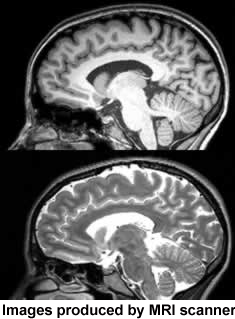


|
|
|
|
|
|
|
|
|
|
|
|
||||||||||||||
|
||||||||||||||
|
|
||||||||||||||
|
||||||||||||||
|
Posted
09/06/2007
Arnold School brain researcher Dr. Chris Rorden is among those who believe it did. The 28th president was incapacitated during his 1919 campaign to persuade the Senate to ratify the League of Nations covenant.
The Senate rejected the League, “and the consequences were really huge. Wilson was trying to make the League of Nations really strong,” said Rorden, an associate professor in the Department of Communication Science and Disorders. “Wilson didn’t believe Germany should be severely punished because that would plant the seeds for another world war. But with him crippled and the U.S. essentially not setting the policy, Germany was very heavily punished after the First World War,” he said. The harsh terms of the Treaty of Versailles are credited with helping Hitler seize control in Germany and, in Rorden’s mind, turned Wilson’s personal calamity into a tragedy on a worldwide scale. Not every stroke has the potential to change history, but Rorden’s research is aimed at understanding what causes them and the best way to rehabilitate people afterward. It is a research topic with a tremendous future, he says, pointing out that strokes are the leading cause of disabilities in the U.S. South Carolina is infamous for having the nation’s second highest death rate from strokes, according to DHEC. PROBLEM WILL CONTINUE America’s aging population virtually guarantees strokes are going to increase, simply because of the way our bodies are constructed, Rorden said. To make that point Rorden references his brother’s aging SUV with 100,000 miles that suddenly began making a terrible sound. Rorden said a mechanic didn’t even open the hood when he declared the engine’s cylinder heads were broken. Everyone was amazed at the speedy diagnosis, until the mechanic explained that this particular model of SUV had a design flaw that results in cracked cylinder heads at about 100,000 miles. By the same token, Rorden said the human body has design problems too. “The human brain classically was designed for a warranty period of about 45 years. That was typically the life span and right now we’re going way beyond the warranty for our brain. “We’re getting much older than we used to and certain weak parts of our body will fail. Unfortunately one of them is the blood system that serves our brain,” he said. With support from a $1 million RO1 grant from the National Institutes of Health, Rorden is studying the brain’s right hemisphere seeking to understand connections between brain damage and behavior. “Our understanding of the human brain is much like our understanding of the world around the time of Columbus” with mapping of the unknown areas being a major challenge, he said. Rorden says studying people with brain damage gives scientists a lot of insight into how the brain functions – or doesn’t function – as the case may be. VICTIMS BECOME UNAWARE While studying in England, Rorden encountered an ambulance driver who had a brain tumor that grew very slowly so he was never aware he had a problem. Gradually he began to ignore the left side of the road – the side people drive on in the UK -- until one day he ran his vehicle head-on into another car. In another case, a woman in Germany came home, raised the door on one side of her garage, and then drove her car through the closed door on the other side. In other cases, Rorden has seen men who shave only one side of their face. Rorden said the remarkable thing about these cases is that the victims are totally unaware of their problem because “We can’t get ourselves to believe that are parts of the world that we can’t see. Our brain gives us this illusion that everything is normal.”
The other scanner is at the Medical University of South Carolina in Charleston where Rorden has an appointment as an adjunct assistant professor. A San Francisco native, Rorden earned a bachelor’s degree in psychology from the University of California, San Diego in 1993. He studied at St. Andrews University in Scotland and earned his doctorate in experimental psychology from Cambridge University in 1996. He came to USC in 2000 as a research fellow in the psychology department. In 2005, he joined the Communications Science Department faculty. For more information, visit: |
| Columbia, SC 29208 • 803-777-7000 • sphweb@gwm.sc.edu | © University of South Carolina Board of Trustees |


 Rorden is one of several Communication Science researchers who work at
the McCausland Center at the Palmetto Health Richland Hospital, home to
a high-field strength, 3 Tesla Magnetic Resonance Imaging (MRI) scanner,
one of two in the state.
Rorden is one of several Communication Science researchers who work at
the McCausland Center at the Palmetto Health Richland Hospital, home to
a high-field strength, 3 Tesla Magnetic Resonance Imaging (MRI) scanner,
one of two in the state.